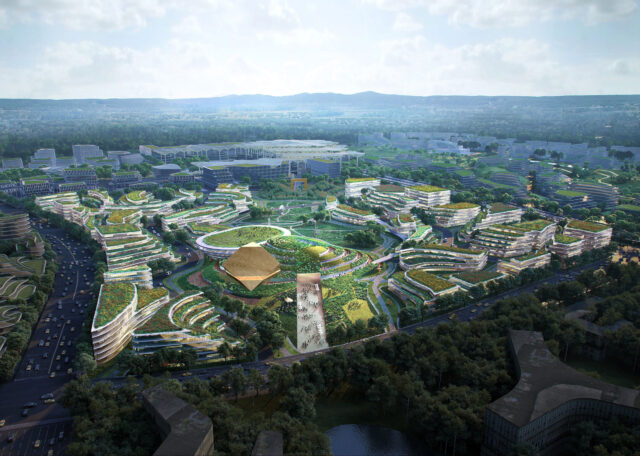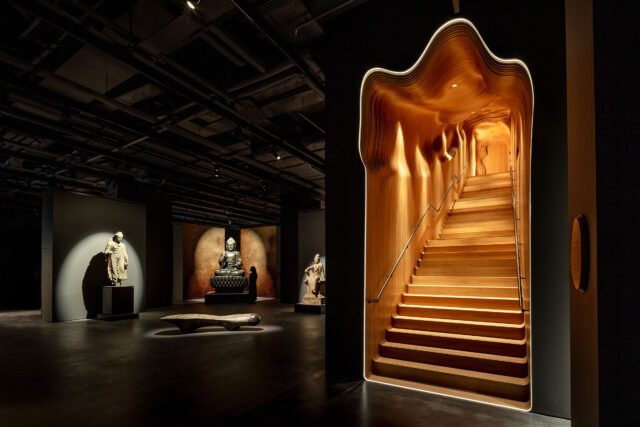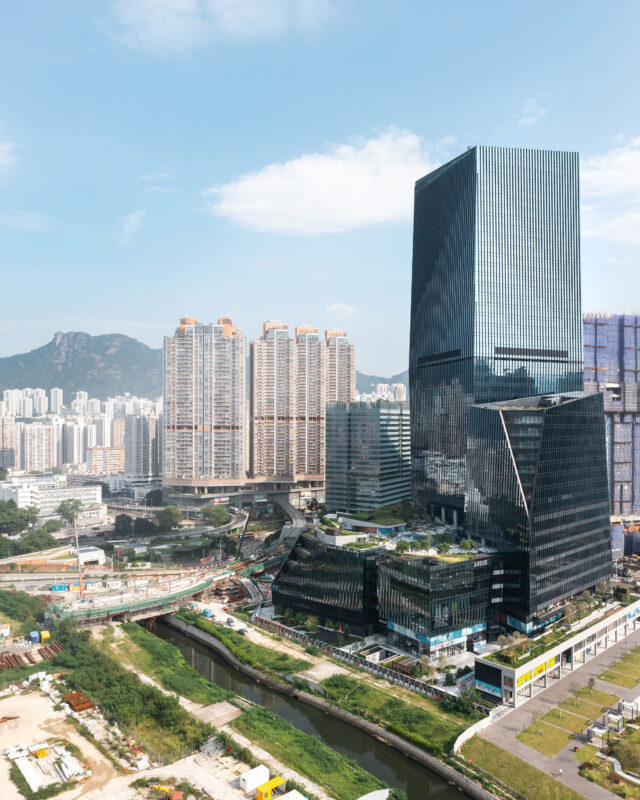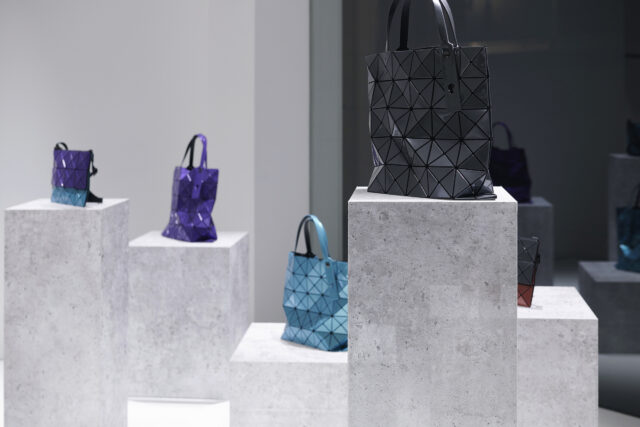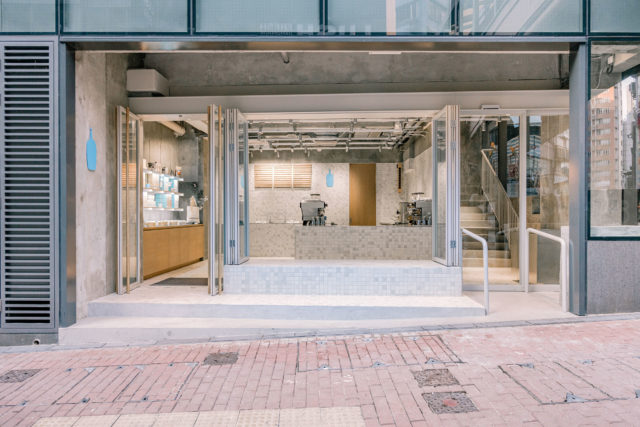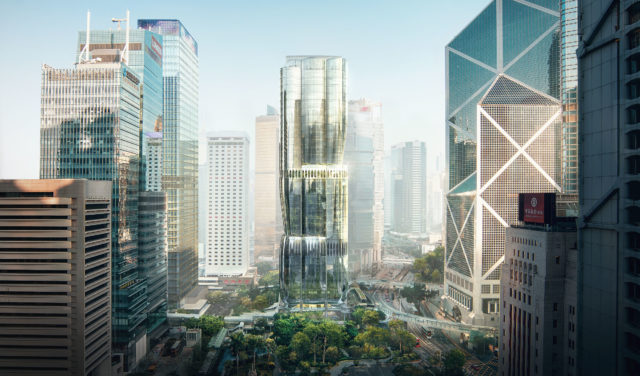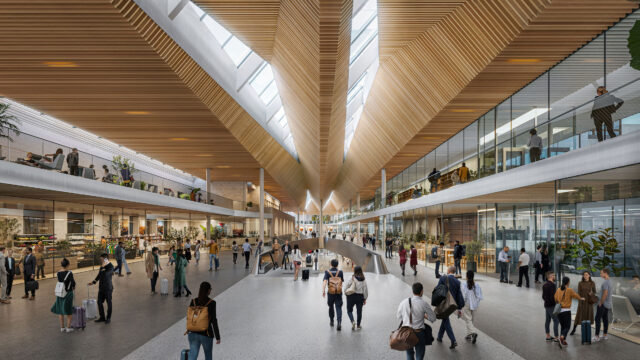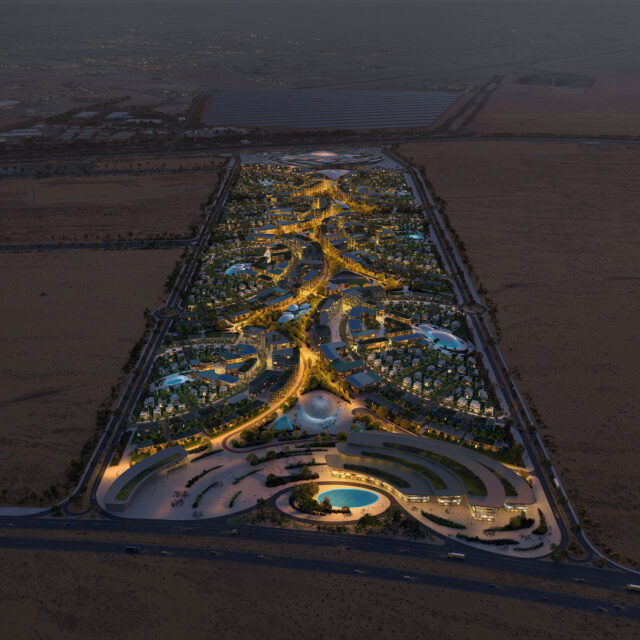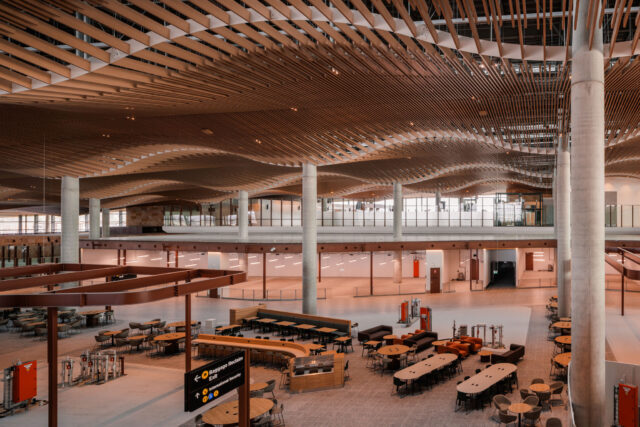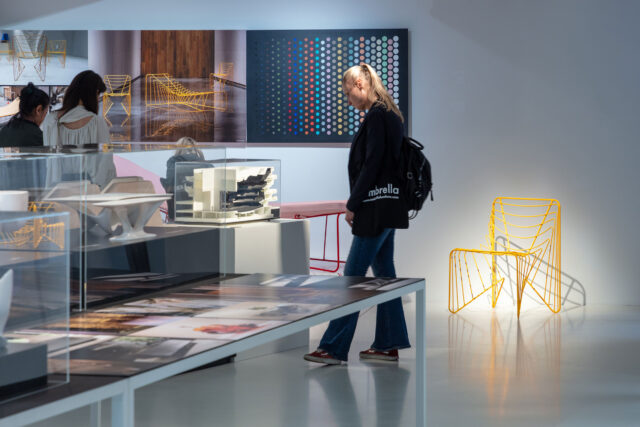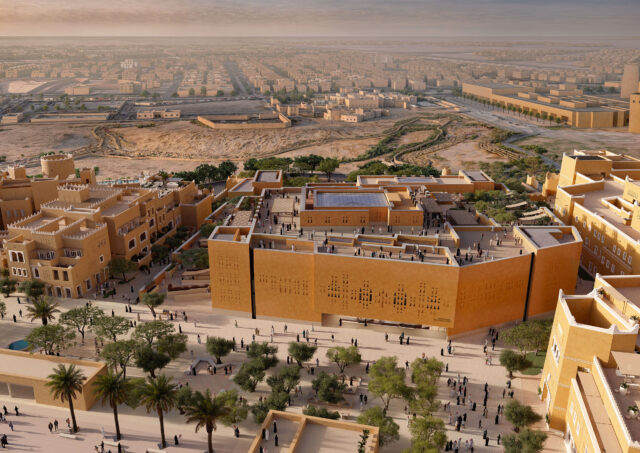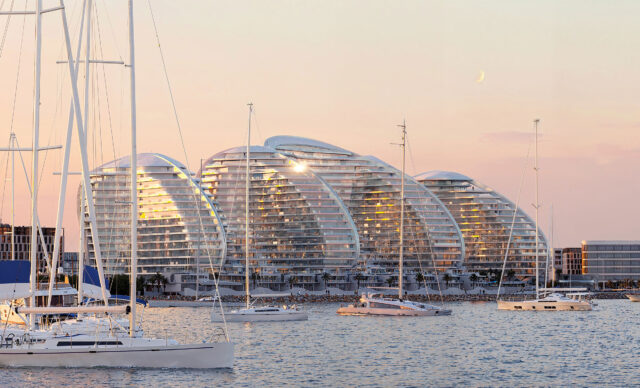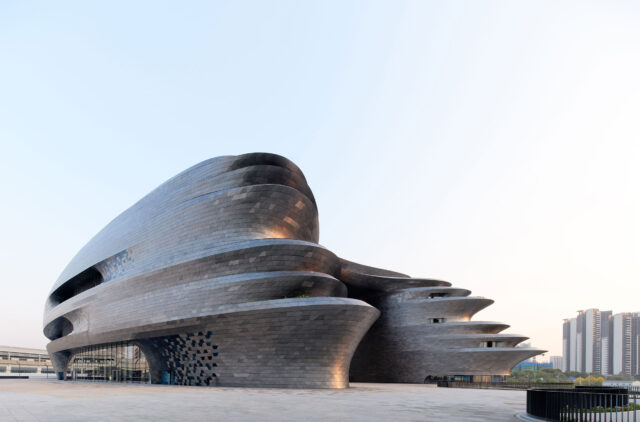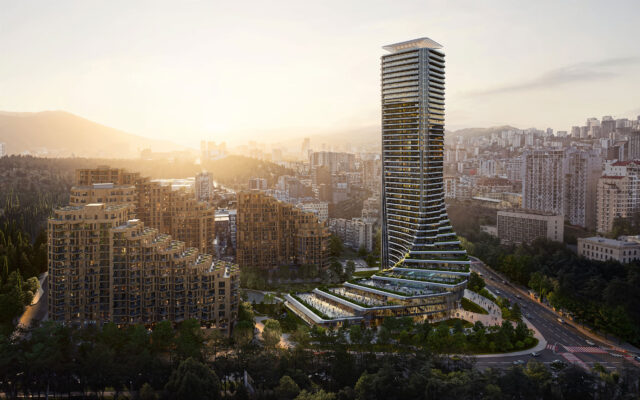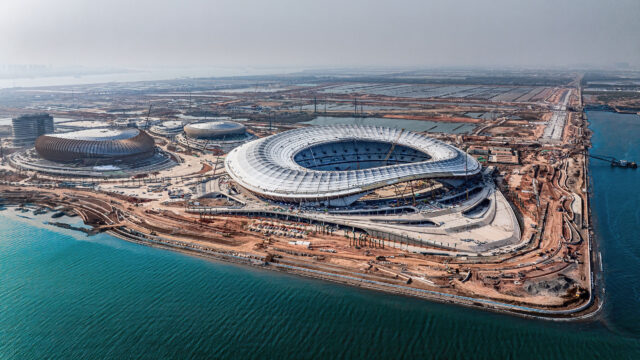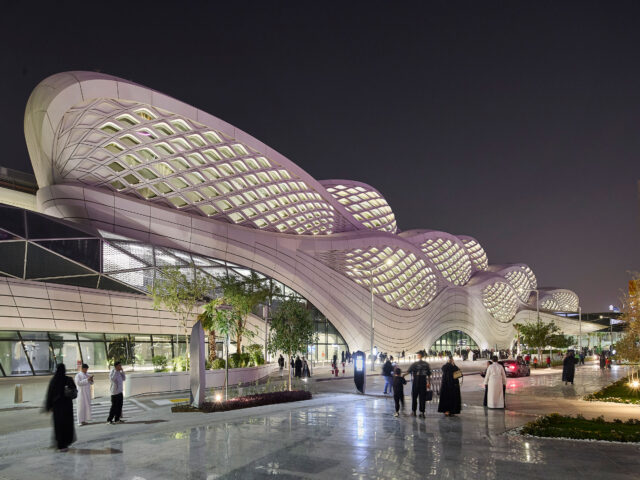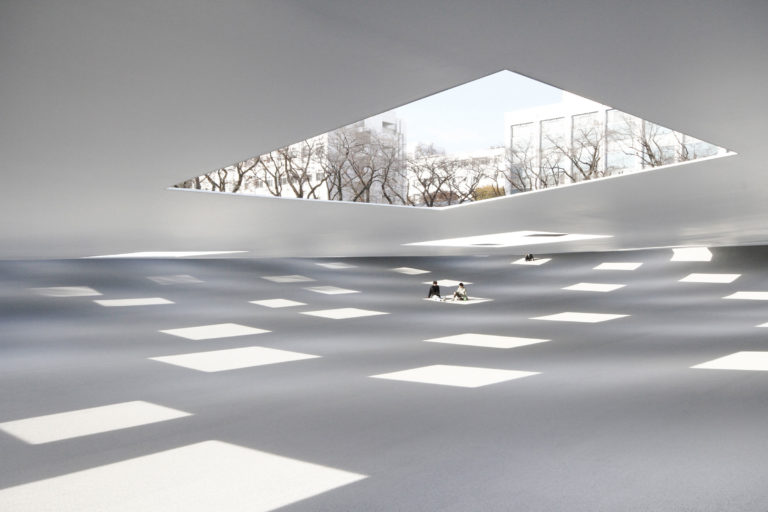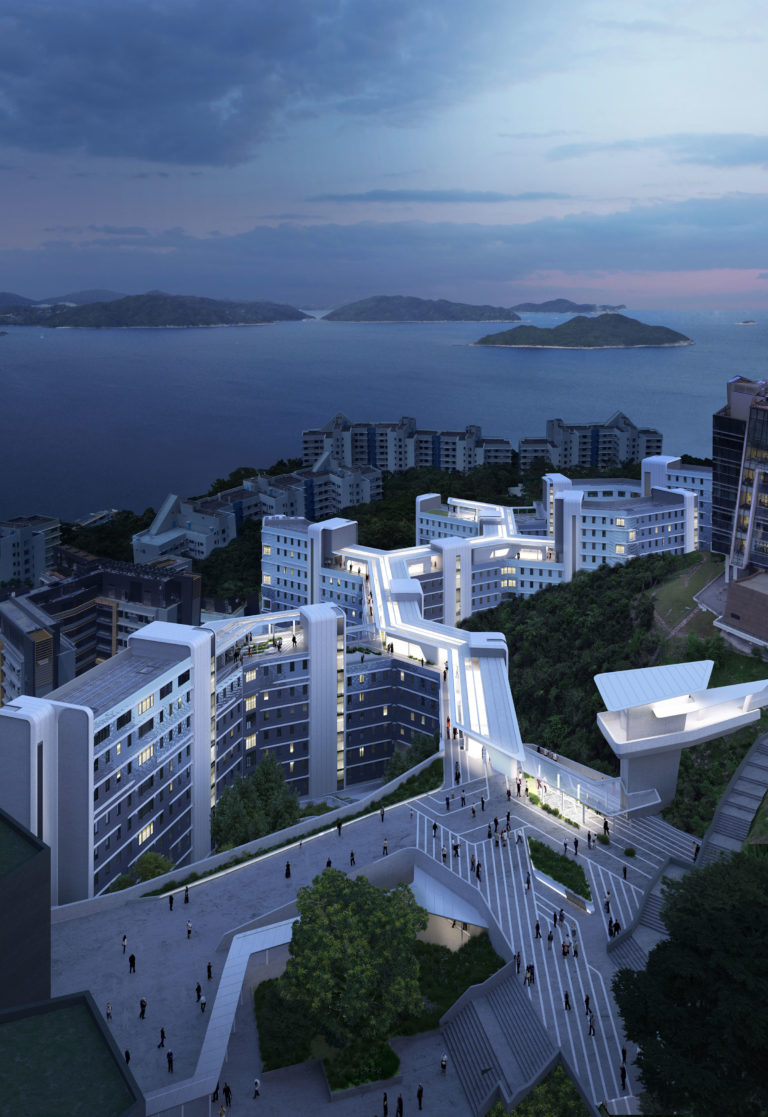
SHARE ザハ・ハディド・アーキテクツとリー&オレンジが計画を進める、香港科学技術大学の学生寮「Student Residence Development」。2023年の完成を予定



ザハ・ハディド・アーキテクツとリー&オレンジ(Leigh & Orange)が計画を進める、香港科学技術大学の学生寮「Student Residence Development」です。2023年の完成を予定しています。
以下は、プロジェクト概要の要約です。
1991年に設立された香港科学技術大学(HKUST)は、アジアをはじめ世界各国で常にトップクラスの研究機関となっています。また、香港科学技術大学は、世界で最も急速に成長している大学の一つでもあります。2019-2020年度に入学する16,000人の学生の半数以上が海外からの留学生であることから、クリアウォーターベイキャンパス内の新しい居住施設の需要が急務となっています。
2023年の完成を予定している同大学の新しい学生寮は、ザハ・ハディド・アーキテクツがリー&オレンジと共同で設計したもので、1,500人以上の学生が入居する予定です。50年のライフサイクルのための持続可能な建設慣行と運営戦略と高度なデジタルデザイン技術を組み合わせたデザインは、今日の重要なグローバルな問題を解決するために技術と革新を利用するという大学の使命に導かれています。
香港科学技術大学のキャンパスの南東に位置し、新しい建物は、ベースからトップまでの約25mのレベル差にまたがる傾斜地に位置しています。屋根のラインは、より強いキャンパス文化を奨励するために、純粋なカリキュラムの仕事以外の学生間の自発的な相互作用のエリアを作成するという大学の報告書に応えるために、社会的に活発な循環のサラブレッドに戦略的に開発されました。また、このルーフラインの開発により、北キャンパスのアカデミック棟と南キャンパスの居住棟を結ぶ新しい大通りが誕生し、日常的に丘陵地を周回して居住棟に行く必要がなくなりました。
建物の形態は、デジタルツールを使用して、敷地のセットバック、地形のレベル、既存の土の釘、サイトラインなどの多くの敷地パラメータを同時に考慮し、敷地を最適化した構成になるように開発されました。内部空間もデジタルエンコードされ、機能的な最適化と昼光への近接性を考慮したレイアウトテストを可能にしました。
1500以上のベッドスペースを持つ住宅ホールは、丘の斜面に沿って蛇行する六角形の構成で構成され、斜面の上にテラスを介して4つの中庭を作成しています。すべての部屋が緑地に面しており、効果的に建物には背面からの視線がないように設計されています。宿泊施設は約35,500㎡あり、共有生活スペース、共有学習スペースおよび共有プレイスペースを含んでいます。
建設戦略は、効率的な調達と現場での設置を可能にするために並行して計画されています。モジュラー構造を使用する香港政府のイニシアチブに続いて、ファサードとトイレポッドのコンポーネントは、現場で組み立てられたユニットを現場で設置するように計画されています。
以下の写真はクリックで拡大します







以下、建築家によるテキストです。
Established in 1991, Hong Kong University of Science and Technology (HKUST) has become a leading research institution consistently ranked amongst the best in Asia and around the globe. HKUST is also one of the world’s fastest growing universities. Over half of the university’s 16,000 students enrolled in the 2019-2020 academic year are from overseas, creating an urgent demand for new residential facilities within its Clear Water Bay campus.
Planned for completion in 2023, the university’s new halls of residence designed by Zaha Hadid Architects in collaboration with Leigh & Orange will house over 1,500 students. Marrying advanced digital design technologies with sustainable construction practices and operational strategies for its 50-year life cycle, the design is guided by the university’s mission to harness technology and innovation to solve today’s critical global issues.
Located at the South East of HKUST campus, the new building sits on a sloping site spanning approximately 25m of level difference from the base to the top. The roof line has been strategically developed into a socially animated circulation thorough-fare to respond to the university’s brief to create areas of spontaneous communal interaction between the students outside of pure curriculum work to encourage a stronger campus culture. This development of the roofline will also allow for a brand new thorough-fare connecting the Academic blocks of the north campus to the primarily residential blocks of the south, eliminating the need to circumnavigate the hilly terrain to get to the living quarters on a daily basis.
The form of the building has been developed to be a site optimised configuration through the use of digital tools to allow simultaneous considerations of numerous site parameters such as the site set back, terrain levels, existing soil nails and sightlines. The internal spaces were also digitally encoded to allow layout tests driven by functional optimisations and proximity to daylight.
The residential halls with a total of over 1500 bed-spaces are organized in a hexagonal configuration meandering along the hillside creating four courtyards terracing over the slope. The massing has been designed such that all rooms face a green space and effectively the building has no rear elevation. The accommodation includes Co-live, Co-learn and Co-play spaces of approx. 35,500 sq.m total.
The construction strategy has been in parallel designed to allow for an efficient procurement and installation on site. Following on from the Hong Kong government’s initiative to use modular construction the façade and toilet pod components have been designed to be off-site assembled units which will be raised into place on site.
Design Approach
The Central Spine
The Roof line has been developed as a 200m long ‘Central Spine’ which will act as a public domain with multiple social functions such as recreation lounges, gymnasium, communal catering pod and IT Labs – accessible to the residents, non-residential students and staff during the day. It also will be an active thoroughfare connecting the academic buildings at the north to the primarily residential south side of 2 the campus, eliminating the need to circumnavigate the hilly terrain to get to the living quarters. 2 express lifts located at strategic points along the spine facilitate travelling down the 25m slope.
The ‘Central Spine’ enables the halls of residence to be designed with a top down hierarchy of public and private spaces. The roof is the most public domain corresponding at the level of the academic block.
The Courtyards
The 4 courtyards at the base of the residences are envisioned to be progressively quieter breakout spaces, registering the variation of the slopes as the roll down towards the residential part of the campus. They are assigned different functions depending on the location and the landscape.
The Zen garden is a buffer between the new residence and the staff quarters, is designed is to have thicker vegetation and more shelter to cater for quiet activities such as reading and relaxing.
At the higher levels, the East and West have the wellness courtyards characterized by steep 15m level differences designed into varying terrace tiers. The tiers allow a variety of more vibrant activities from farming, exercising, picnicking, to social gatherings. The vistas from the student rooms are animated by all these activities with landscape and greenery as the backdrop. A meandering jogging path connects the courtyards and ease the level differences between them, and in doing so it penetrates base of the building’s massing to promote ventilation and intricate spatial interplays.
A multi-purpose hall is located at the top of the West Courtyard, which provides a column free double height space able to accommodate a half-court for basketball. In addition the enclosed nature of the space would allow it to host late night lectures and concerts close to the residential hub of the south of the campus. . This hall would provide a flexible programmable space both arts and sports/ well-being uses.
The overall landscape design aims to promote and provide opportunities for active and healthy lifestyles, recreation and exercises, and active space for social interaction and gathering.
The Clusters
The Student Residence consists of 3 cluster types; Linear, V-Cluster and Y-Cluster. Each of them has a different number of bed capacity, double or single occupancy bedrooms, bathroom and configuration of communal spaces.
The Linear Cluster is the smallest cluster with 18 bed-spaces. It has an open plan kitchen cum communal area which if required can be secured off with a folding glazed partition depending on usage requirements.
The Y Cluster consists of 27 bed-spaces with a central open communal space equipped with study areas, relaxation lounge and kitchen allowing for simultaneous usage of the space by multiple sub-groups of residents. Noise to the sleeping quarters is managed by doors to the communal space from the corridors.
The V Cluster consists of 36 bed-spaces. It is the only cluster organised over a split level and features a double height space with a stair linking a quieter study lounge on upper floor and the dining-kitchen area on lower level.
Every cluster is self-contained, accessible by lift and stair lobby allowing direct access to the exits. This approach allows a range of 18 to 36 students sharing one big apartment. The co-living concept is encouraged by the cluster communal space acting as the living lounge within the apartments, with shared facilities. The space is easily accessed and designated to the students within the specific cluster. This promotes social cohesion and builds up the ownership of the space.
For both the single and double occupancy, privacy and spatial equality has been the primary drivers for the layout design. Storage and furniture configuration has been designed to achieve maximum efficacy within the limited space. Bathrooms are shared by 4 to 5 students with separated shower and WC area. Colour and material palettes have been curated to have a modern and minimal approach.
In the event of pandemics or requirement for quarantining, a considered adaptation maybe be facilitated with ease as each cluster and apartment allows for a single ‘household’ to bubble while maintaining their social distancing by timesharing the private communal spaces, thereby allowing the students not to be adversely affected.
Approach to Modular Construction
The building façade is designed as a series of repeating modules.
The cluster apartment windows form the majority of the façade surface. The repetitive pre-fabricated modules are formed by a tiled solid façade panel with articulated window openings and external solar shading fins. Insulated glass units have been proposed for all rooms and communal space to reduce heat gain from outside; while solar shading devices in concrete profile further reduce the heat gain, the depth of the profile varies based on the orientation and level of the façade. Three types of ceramic tiles are used in response to the solar heat gain based on the orientation of the façade. It creates a unique continuous mural visualizing the perception of shade and shadow across building envelope.
Internally, within the apartments the toilets have been designed and configured to be built off-site as pre-assembled pods to be lifted onto location on site.
Sustainability Approach
Moving away from the traditional hostel Electrical & Mechanical approaches a centralized Air-Conditioning and Hot Water System have been incorporated into the development with combination of solar water heater system and heat recovery pipe-works in order to optimize the use of energy. The new development taps into the existing campus wide services as a first step towards HKUST upgrading their Electrical & Mechanical assets in a holistic manner to future proof the campus-wide energy consumption.
Insulated Glass Unit (IGU) and thermal insulation layers have been integrated into the building envelope design in order to optimize the energy performance of the living spaces.
Furthermore, smart room control system is promoted to allow the residents to manage their bedroom performance via their smartphone. The usage data is intended to be mined in order to monitor the daily energy performance and possible optimisation opportunities.
Application of Digital Design Tools
Building Form & Construction Setting out Optimisation
The multi- courtyard, multi nodal massing orientation and building positioning on site have been generated by a grasshopper script with consideration of numerous variables – , from MACRO scale parameters ( site set back, terrain levels, existing soil nails, preservation of critical views from existing buildings) – to MICRO scale parameters ( room mix, room width room depth, window width).
The building grid has been generated by an alternative script to enable it to recalibrate to an optimal efficacy whenever there are changes in the input data and hence facilitate the on-going design development and coordination.
Rationalisation of the nodal communal space
The geometry and setting out of the central nodal space, the Y cluster and V cluster communal areas, are encoded to a graph with angular similarity and maximal views as input constraints. It allows rapid interior layout test fits and also visualises the overall implication to the 6-8 storeys massing shape and four courtyard configurations.
Solar paths and heat gain mapping were applied to the façade surface, informing the generation of the solar shading fins positioned at the top of the room windows. The geometry is defined by two variables – the depth and the length. The depth of the solar fins is responsive to the solar exposure and space programmatic planning to ensure thermal comfort of the interior spaces
Ceramic tiles are used at the flat area of the precast module. Three types of ceramic tiles have been proposed in response to the solar heat gain ranging from dark to light. It creates a unique continuous mural to hint the perception of shade and shadow across building envelope.
A script was developed with variable inputs for solar heat gain, tile colour and desired pattern as input, allowing a coloured elevation with designated code names of each module to be exported for ease of installation on site.
BIM / Building Information and Modelling
To promote the utilization of new design and construction technology, Building Information Modelling (BIM) and Design Simulation have been adopted early on from the concept stage, with full BIM integration at the design development process to optimize the effectiveness of design coordination and material selection.
The application of BIM extends to study the precast façade modulation and optimization of the sun-shading fins design, the 50 years Life Cycle Analysis Study for material selection cooling and water heating system, including the cost study of construction, operation, maintenance and replacement, has been executed during the design process to review the overall performance and effectiveness of different system.
Student Residence Development
———
Project Data
Brief: On-campus accommodation for over 1500 students
Client: Hong Kong University of Science and Technology
Area: Approx. 35,500 sq.m / 5-8 floors
Location: Hong Kong, China
Status: Under Construction
———
Project Team
Lead Architect: Leigh & Orange (L&O)
Design Architect: Zaha Hadid Architects (ZHA)
AP: L&O
Building Services Engineering: WSP [Asia]
Structural & Geotechnical Engineering: WSP [Asia]
Facade Engineering: WSP [Asia], Inhabit
Landscaping: Earthasia
Quantity Surveyor: Rider Levett Bucknall
Sustainability: L&O, WSP [Asia]
Traffic consultant: MVA Asia
Acoustic consultant: WSP [Asia]

